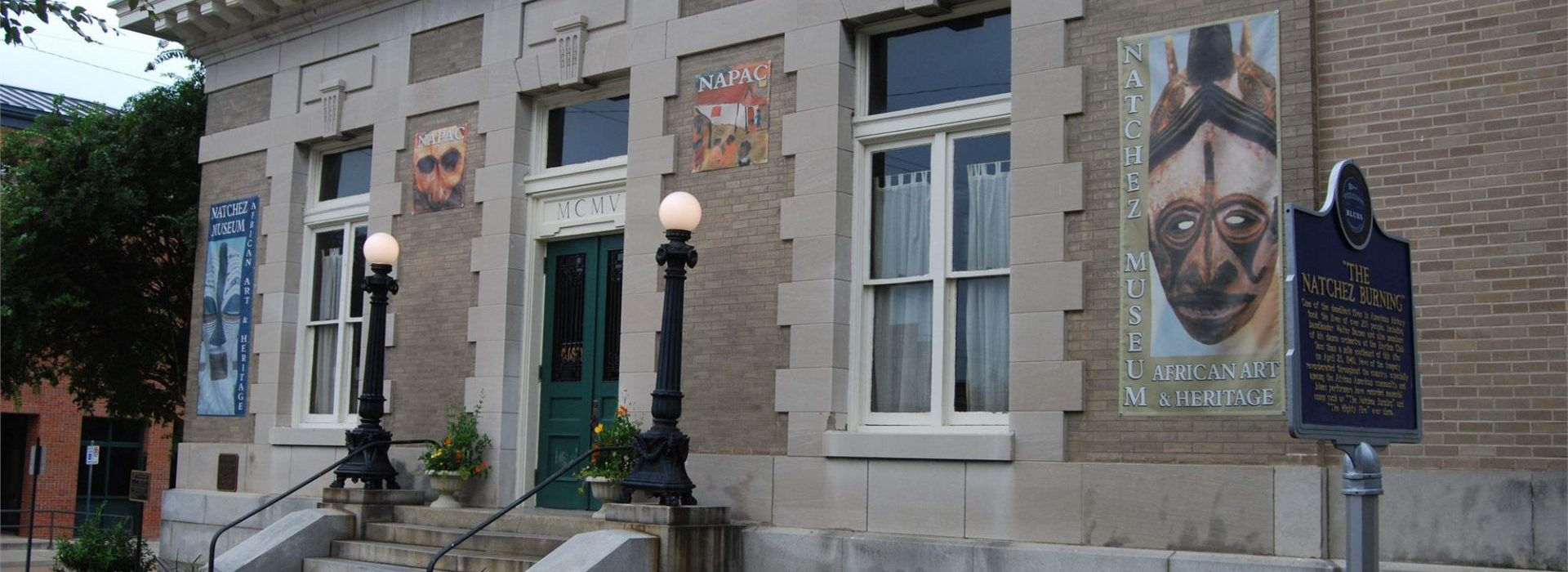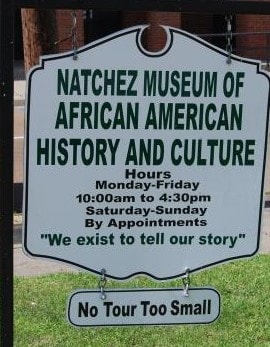Founded in 1991 by the Natchez Association for the Preservation of African American Culture, this museum is located in Natchez, Mississippi. The organization, whose mission is to examine and present the many contributions Natchez persons of African descent made to society, started the museum to chronicle the history and culture of Blacks in the American South.
The museum, a 10,000 square feet facility, is housed in a building that was constructed in 1904 and served previously as a United States Post Office. Its exhibits are spread throughout the museum and can be led by a docent or self-guided. From mementos, primary documents, art, photographs, books and even music, visitors will learn a great deal about Natchez, beginning with the incorporation of the City of Natchez in 1716.
One of the museum’s primary exhibits includes the development of Natchez, which was the second largest market of enslaved Blacks, after only Charleston in South Carolina. The exhibits cover people, events, and ideas, ranging from pre-slavery to post-Civil Rights Movement, integral to life in Natchez. This coverage includes that of the Forks of the Road, which was a meeting of the major roads into Natchez. At this intersection was a set-up of a marketplace where everything from foods, crafts, animals and even Blacks were sold. The Forks of the Road has been acknowledged by the United Nations for its active involvement within the international slave trade.
Of the many Blacks suffering under the brutal system of slavery was Abdul-Rahman ibn Ibrahim Sori (1762–1829), who was a Torodbe Fulani nobleman and Amir (governor). In 1788, he was captured in the Fouta Jallon region of Guinea, West Africa and sold to slave traders in the United States. Through happenstance, Sori became re-acquainted with Dr. John Cox, an Irish surgeon who had been taken in by Abdul-Rahman’s family when he was abandoned becoming critically ill while serving on an English ship. Cox appealed to Thomas Foster, who owned Sori, to sell him so Sori could return home to Guinea.
However, Foster refused to sell him, since he viewed Sori, who he derisively referred to as “Prince”. Foster stated Sori was needed for the work on his land and he also took pride in being able to keep Sori enslaved. Cox continued his fight until his death in 1829, to which Cox’s son sought the release of Sori. After spending forty years enslaved, Abdul-Rahman ibn Ibrahim Sori was freed in 1828 by order of President John Quincy Adams and Secretary of State Henry Clay of the United States, who honored the request for his release by the Sultan of Morocco. In 2007, the documentary, Prince Among Slaves, was released. Narrated by rapper/actor, Mos Def, it details the life of Abdul-Rahman ibn Ibrahim Sori.
There is a display that details Blacks’ fight for freedom, significantly when recently-emancipated men and women fled to Natchez in 1863 after the Union occupied the Southern city. Many of these men enlisted and fought to support the Union and, at the ending of the Civil War, some were even able to purchase the plantations upon which they had been enslaved.
During this period of Reconstruction, Hiram Rhodes Revels became the first African-American to serve in the U.S. Congress when he, a Republican, was elected to represent Mississippi in the Senate. In the Civil War, Revels served as a chaplain and an organizer of two regiments of the United States Colored Troops. A minister in the African Methodist Church, he, after serving in the Senate, was appointed as the first president of Alcorn Agricultural and Mechanical College (now known as Alcorn State University) and acted as its head from 1871 to 1873 and 1876 to 1882.
Visitors will learn of great Natchez citizens such as William Grant Still, “the Dean of African-American composers”. Still was the first American composer to have an opera produced by the New York City Opera. According to writer Edith Borroff in her biographical sketch of him, Still is known most for his first symphony, “The Afro-American”, which was, until the 1950s, the most widely performed symphony composed by an American. A composer of greater than one hundred-and-fifty works, including five symphonies and eight operas, Still was, as stated by Elish Kuhl Kirk in American Opera, “ … the first African American to conduct a major American symphony orchestra, the first to have a symphony (his 1st Symphony) performed by a leading orchestra, the first to have an opera performed by a major opera company, and the first to have an opera performed on national television.”
Guests will also read of the 1940 fire at The Rhythm Nightclub, where more than two-hundred Natchez citizens of African descent died. The account of this tragedy was featured in The Long Dream, a novel by the legendary Richard Wright, a native of Natchez. In the museum, there is an exhibit devoted to Wright.
The Natchez Museum of African American History and Culture also provides educational programming and community outreach. These extensions include creating programs, such as the “Black and Blue Civil War Living History Program”. It features portrayals of Revels as well as Wilson Brown, who, having escaped slavery, enlisted in the U.S. Navy. For his heroic deeds aboard the USS Hartford during the Battle of Mobile Bay in August 1864, Brown was awarded the Medal of Honor. This medal is the highest and most prestigious personal military decoration gifted in recognition of U.S. military service members who have distinguished themselves by acts of valor.

